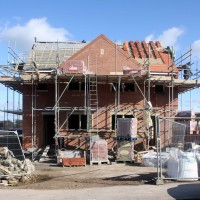
It will need more homes and a fundamental hurdle standing in the way remains the shortage of housing stock.
This has been acknowledged and, in recent years, the government has introduced several changes to planning legislation making it easier for developers to deliver more residential property.
In response to these new opportunities, we have seen the arrival of new developers – often experienced buy to let investors who have perhaps successfully executed a couple of refurbishment projects and identified an opportunity to increase their returns.
And this means there’s a good chance you already have active developers within your bank of clients.
Competitive and specialised market
Development finance is a highly specialised area of lending and it is an area in which many of our members at the ASTL are specialists.
The sector may be far removed from the mainstream residential market, but it helps to deliver the properties on which many mainstream mortgages are secured.
This is a competitive lending landscape, driving new product innovations to meet the requirements of a diverse range of circumstances.
ASTL member Bridging Finance Solutions recently completed a development loan to a group of friends and developers, who pooled their resources and experience to build a stunning five-bedroom home in the Wirral.
While another member Roma Finance, delivered the finance required by an experienced developer to create four terraced houses on land with planning permission in a village location.
Many of our members are currently experiencing increased demand from developers wanting to use permitted development rights to convert commercial buildings into apartment blocks, and there are a range of solutions available to meet the specific requirements of different locations, build type and developer experience.
Underwriting differences
Development finance is more involved than arranging a standard residential mortgage, with funds often released in stages throughout the build.
Lending decisions are more akin to the underwriting of a business loan than a bridge, with decisions based on the developer’s experience and track record, the type of scheme and suitability for its location, and the amount of funding required.
Whereas loan to value (LTV) is a key determinant for how much mortgage lenders are prepared to lend, development lenders will also look at loan to cost (LTC) – how much a lender is prepared to advance as a percentage of the total cost of the works – and loan to gross development value (LTGDV) – the loan as a percentage of the final projected market value of the development.
However, the principles of good lending and good advice remain consistent with the mainstream mortgage market, and this can be a rewarding area of the market for intermediaries.
A good first step is to speak with the BDM of a development finance provider, who will be able to explain the process and considerations in greater depth, or to partner with an intermediary or distribution specialist with expertise in this market.












